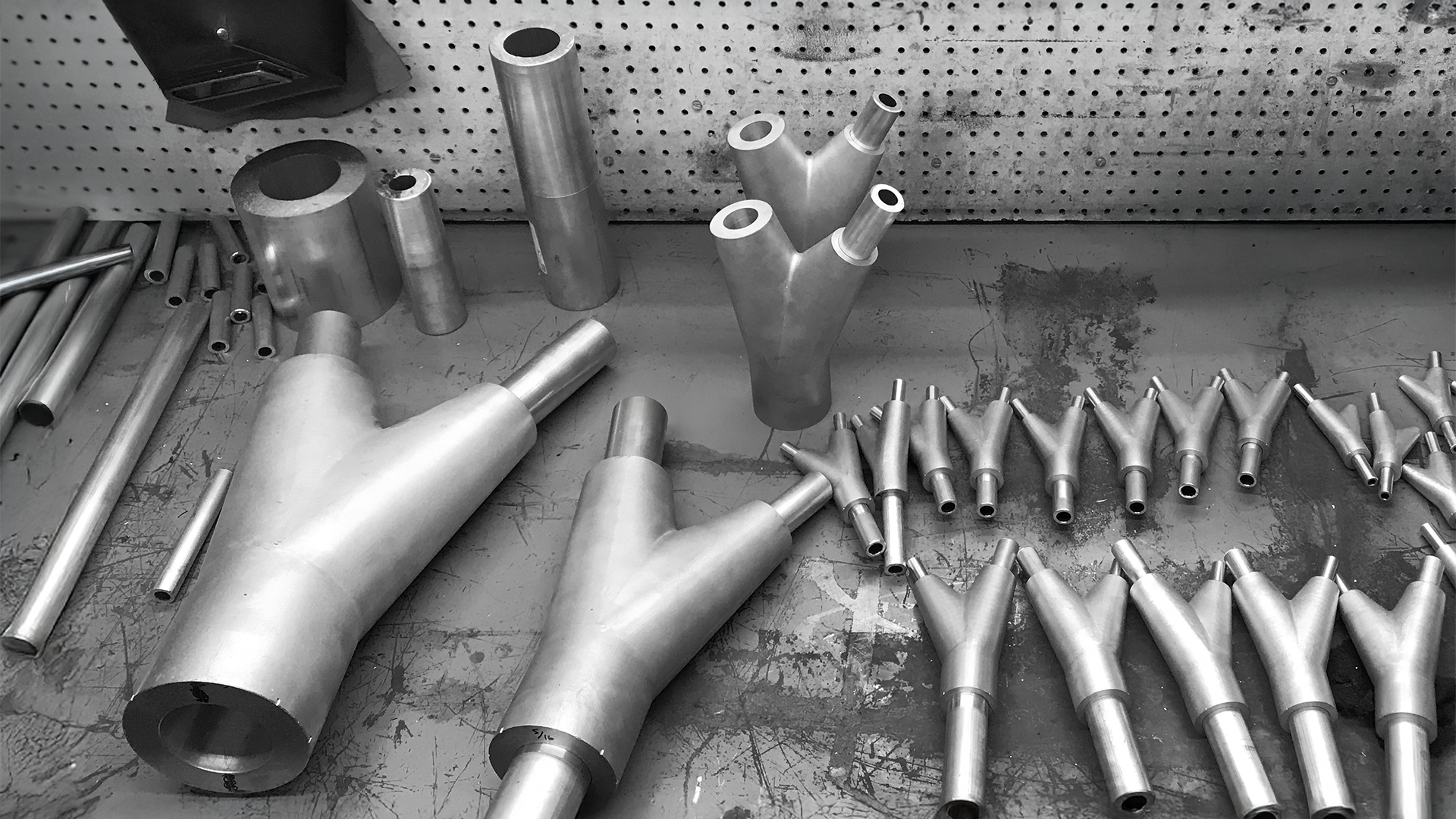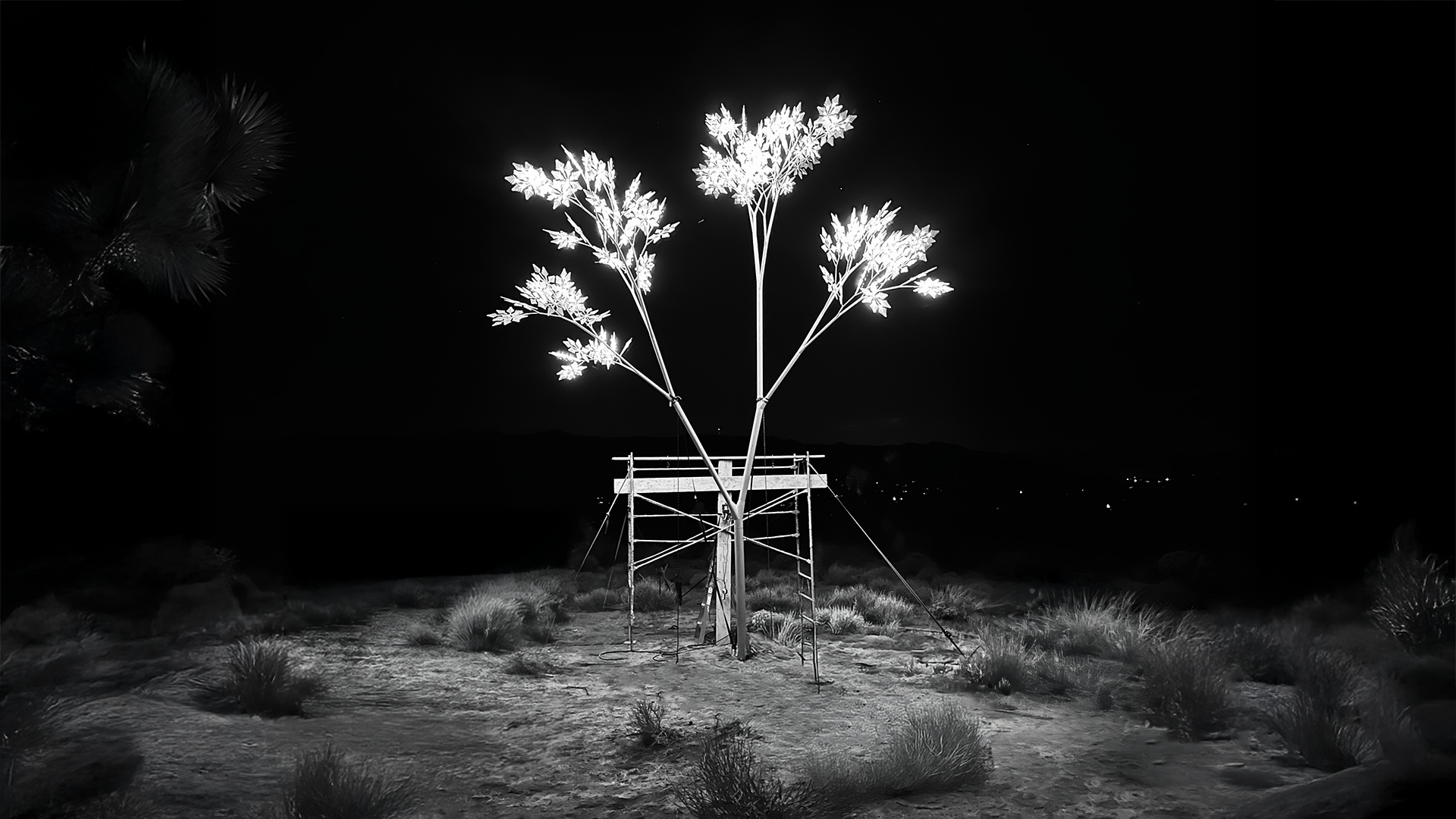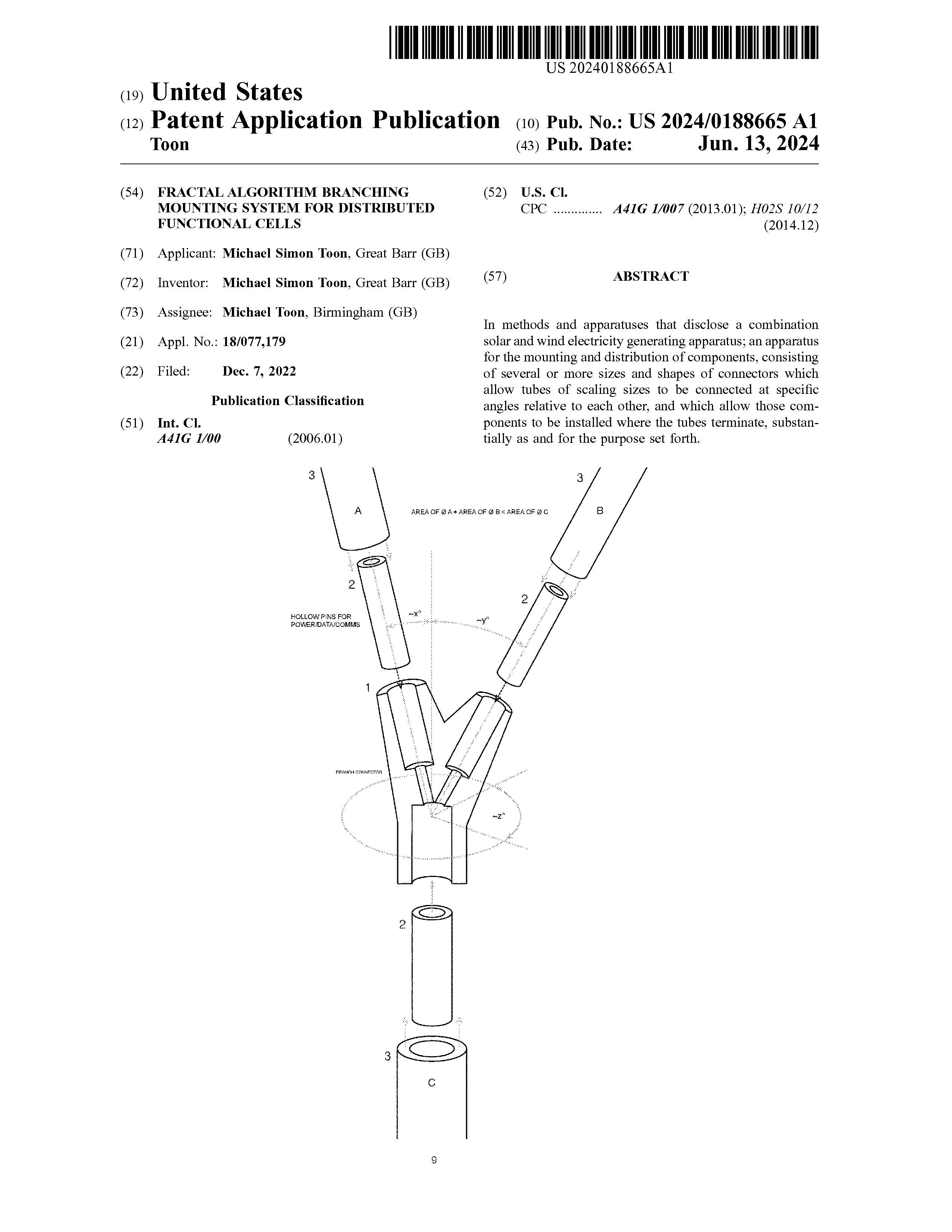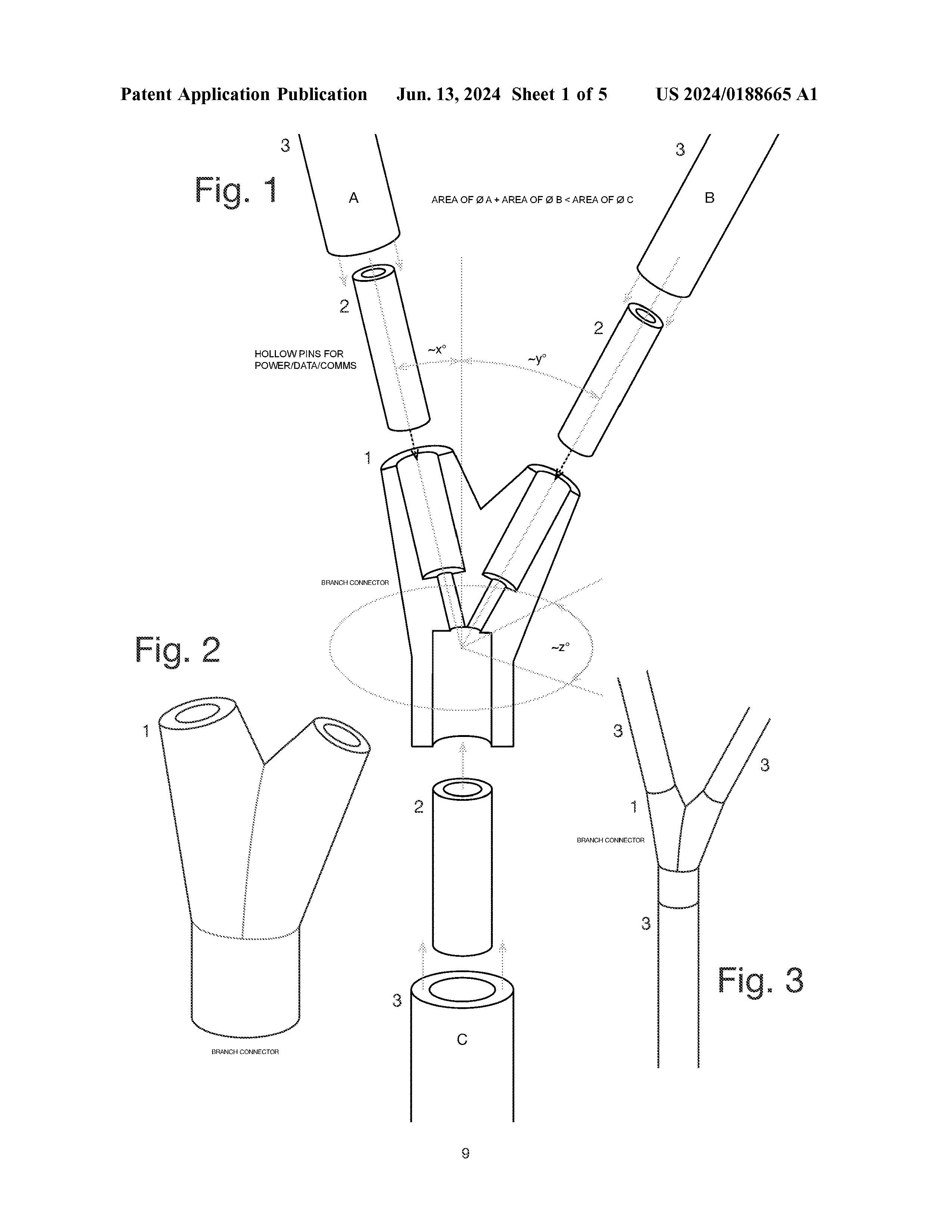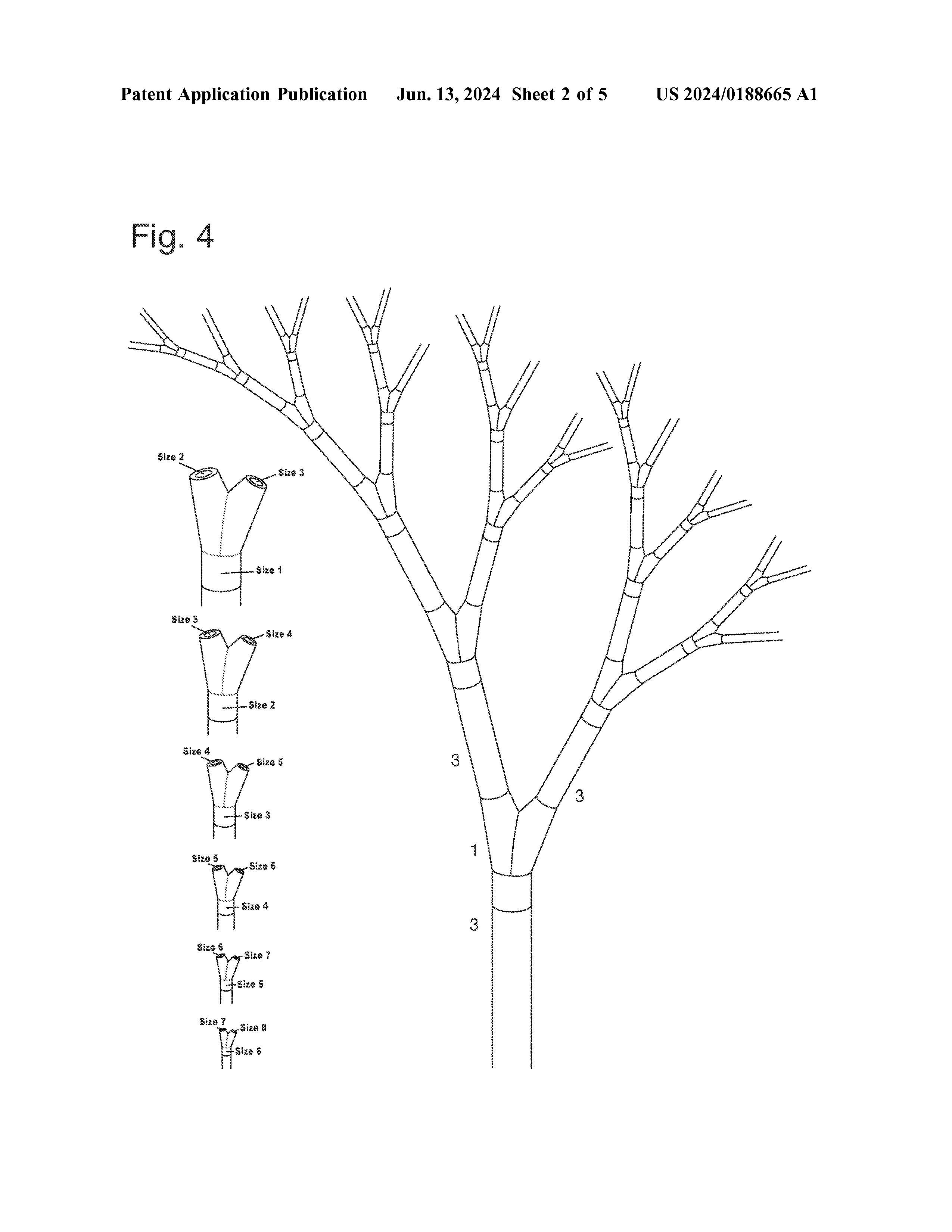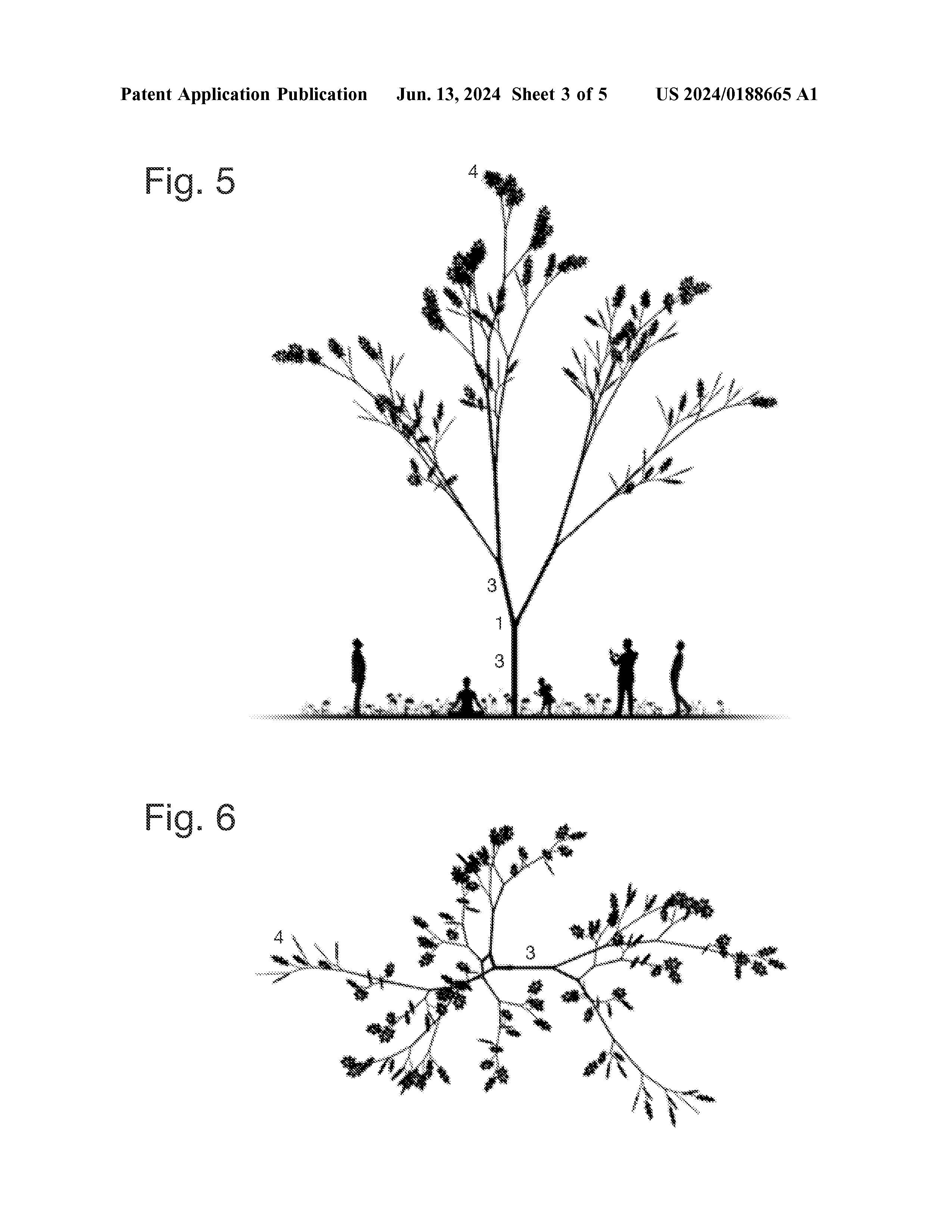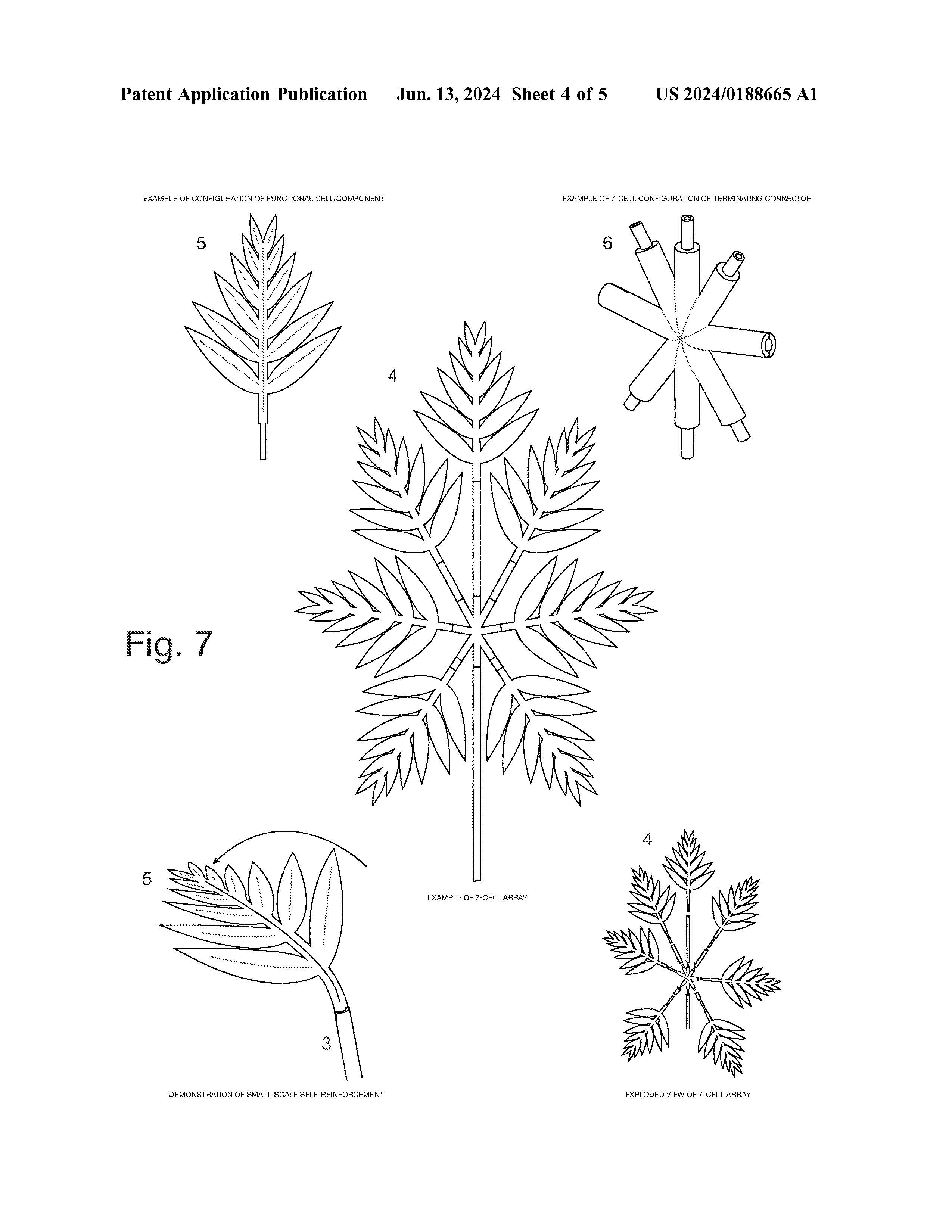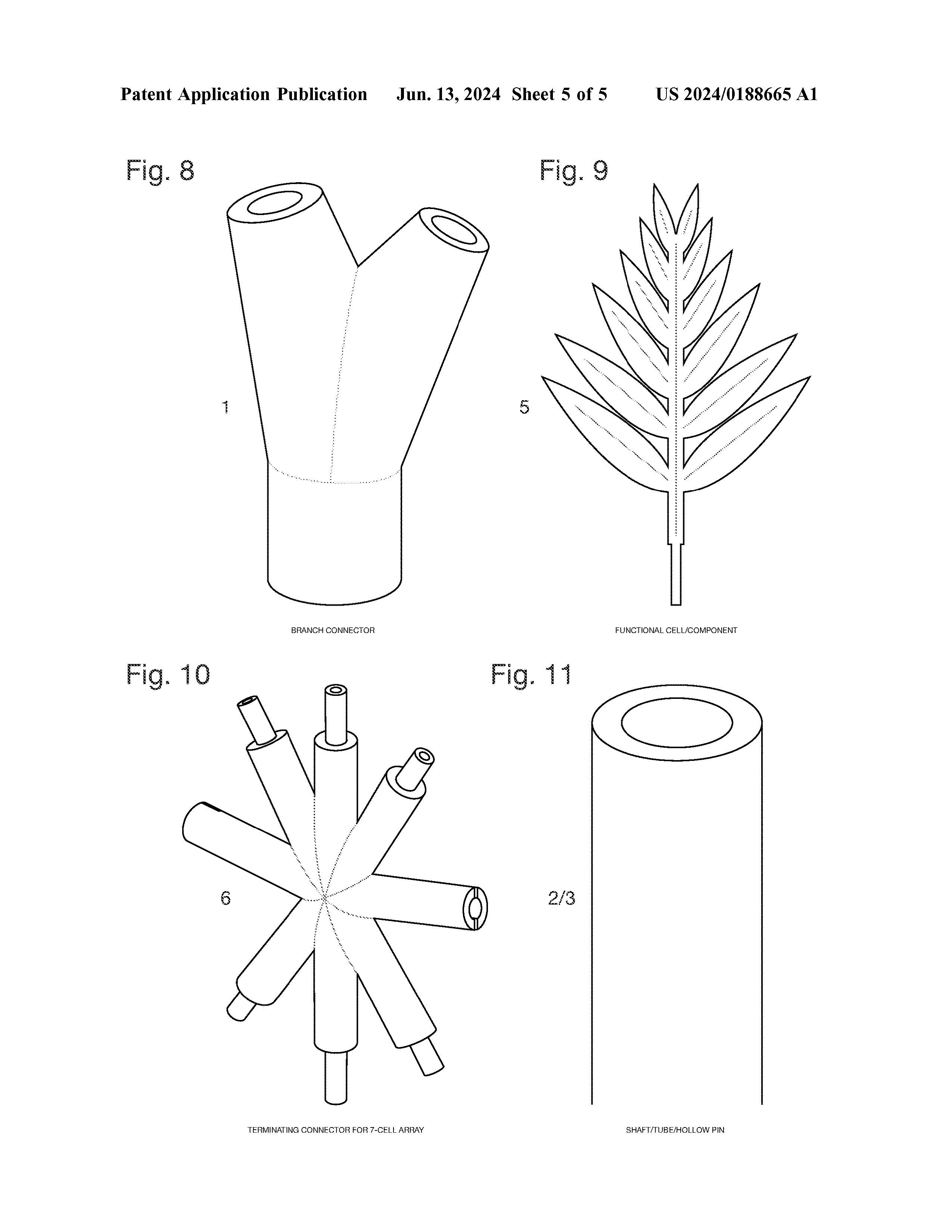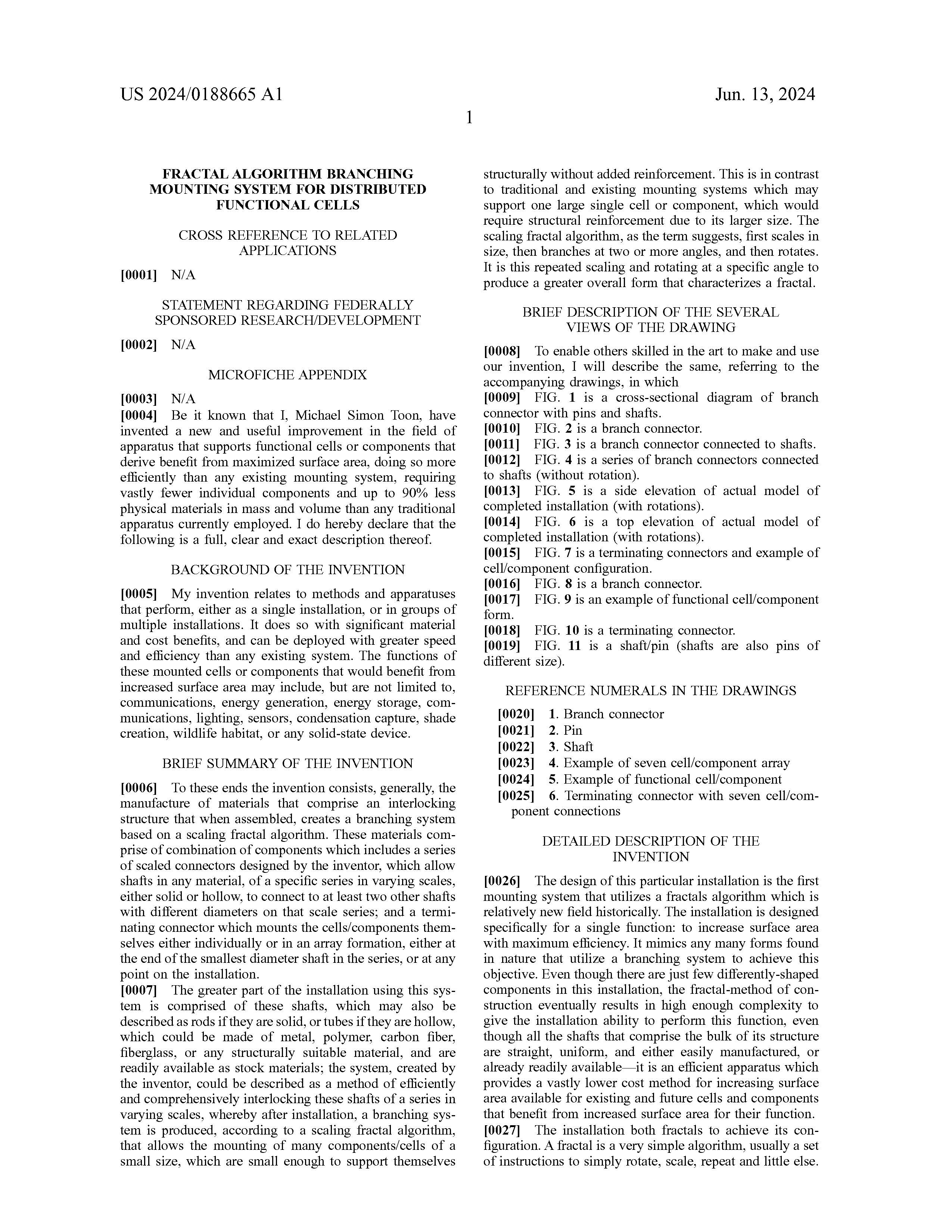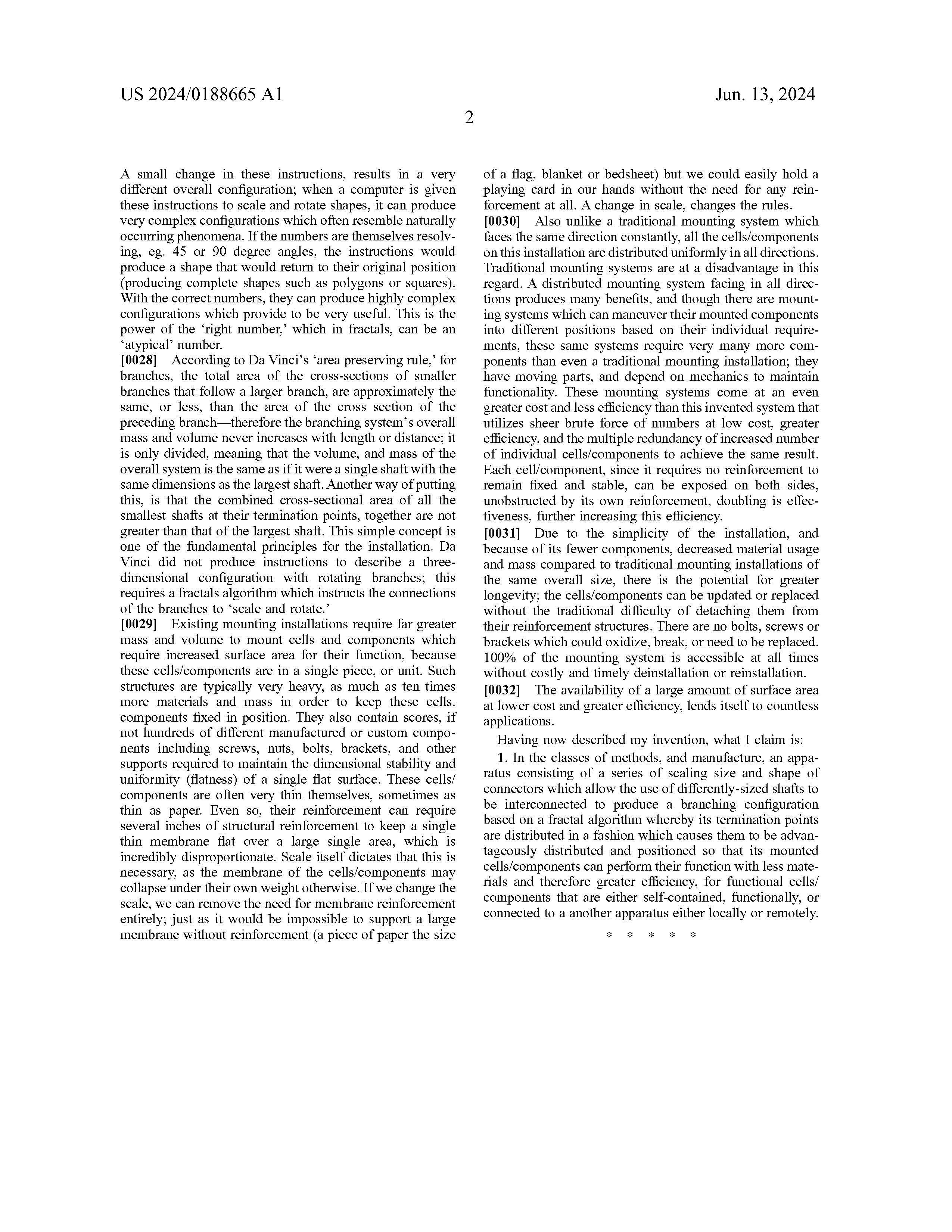Tree of Water and Power
The most efficient functional cell mounting system on the planet: Producing a manufacturable freestanding cell-mounting system providing greater maximum surface area at lower cost and far greater efficiency than any existing mounting system.
Read the Popular Mechanics article about our installation here: popmech.treeofwaterandpower.com
Utility patent, “Fractal Algorithm Branching Mounting System for Distributed Functional Cells,” was granted June 2025: patent.treeofwaterandpower.com
TWP Mounting System
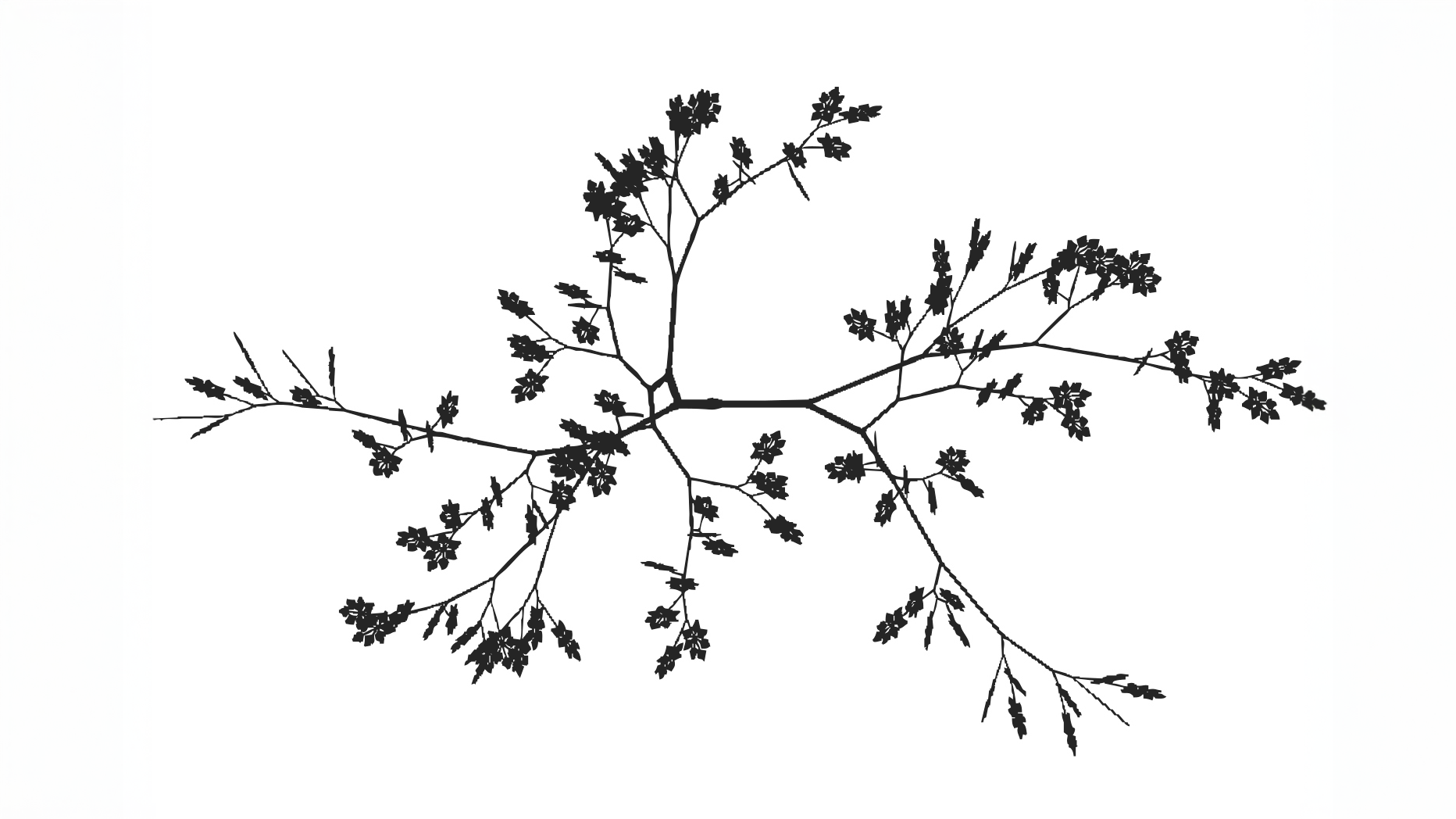
The TWP Fibonacci Fractal Tree, created by Tree of Water and Power, utilizes biomimicry to develop the most efficient freestanding solar-cell mounting system available. This innovative system maximizes surface area and efficiency while significantly reducing manufacturing costs compared to traditional solar installations. It uniquely incorporates fractals and the complete infinite Fibonacci sequence, resulting from its structured three-size connector architecture.
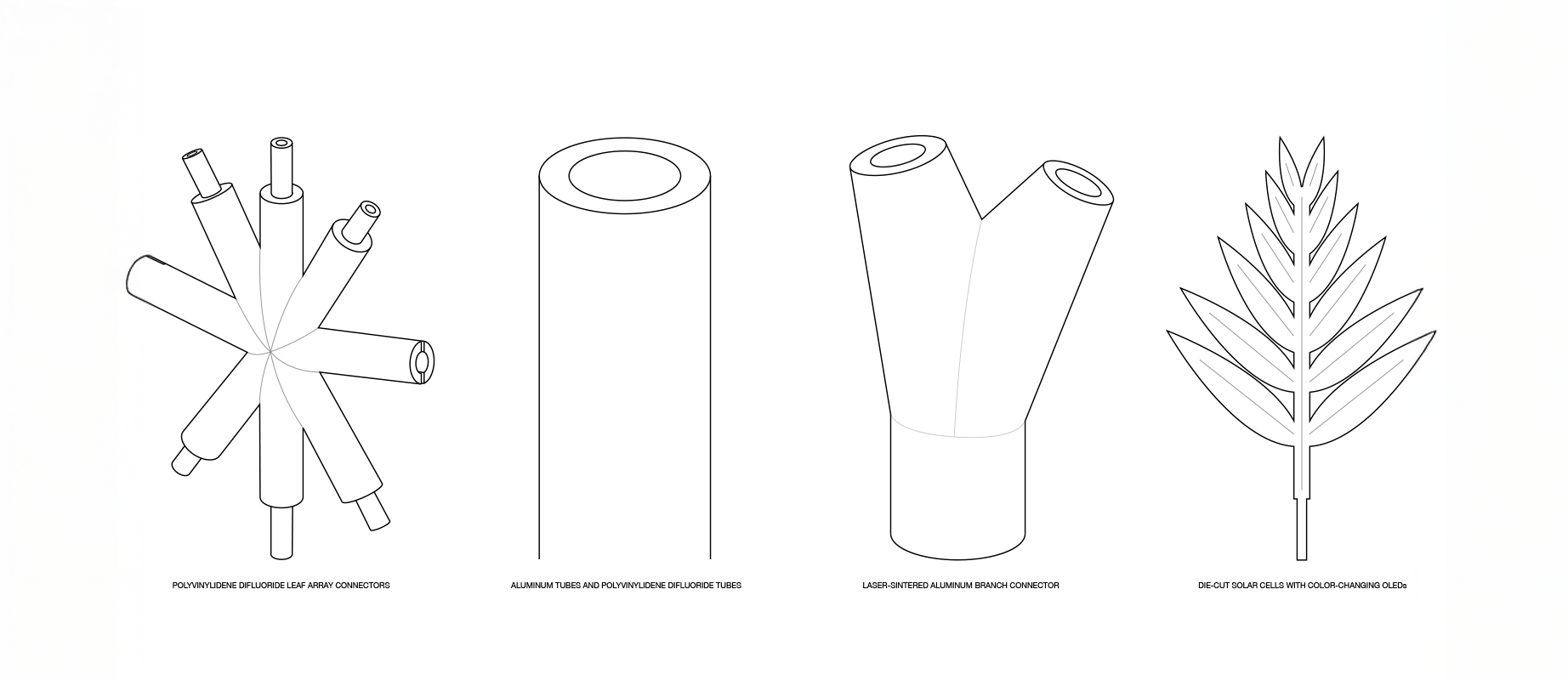
Inspired by nature's efficient designs and guided by Leonardo Da Vinci's "area-preserving rule," the installation achieves structural efficiency through a fractal algorithm. Straight, standardized aluminum tubes are methodically assembled, generating a complex yet efficient branching system. This method ensures that the total cross-sectional area of the branches matches that of the trunk, optimizing strength-to-weight ratios.
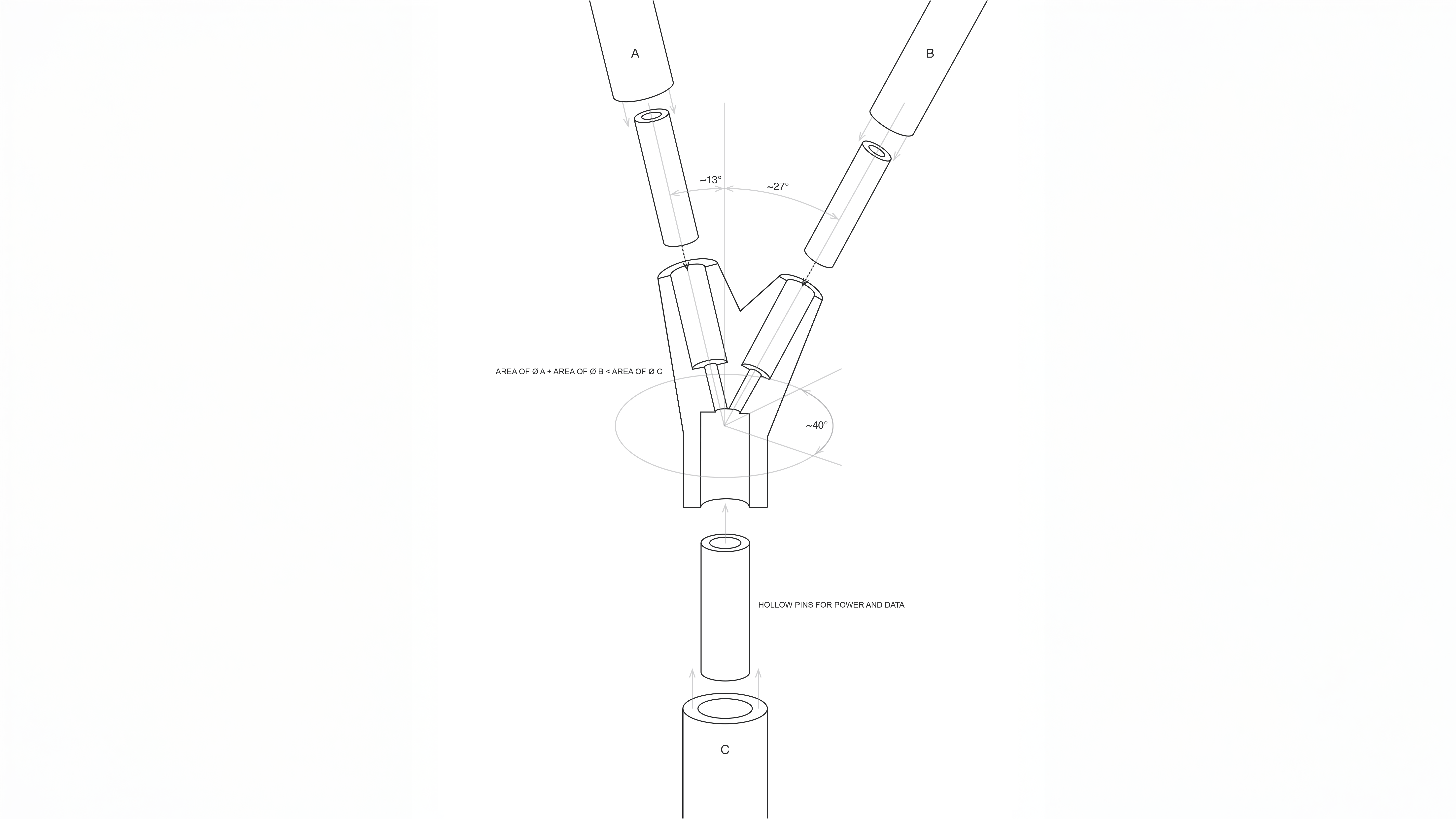
Each installation supports over 1,000 functional cells (approximately 155 sq ft of total surface area). Compared to conventional freestanding solar mounts, this design uses significantly fewer materials, is considerably lighter (approximately 150 lbs vs. 1500+ lbs), and eliminates extensive structural reinforcement. Its multi-directional configuration ensures consistent functionality; in the case of photovoltaics, this means energy production throughout daylight hours without reliance on mechanical movement or complex tracking systems.
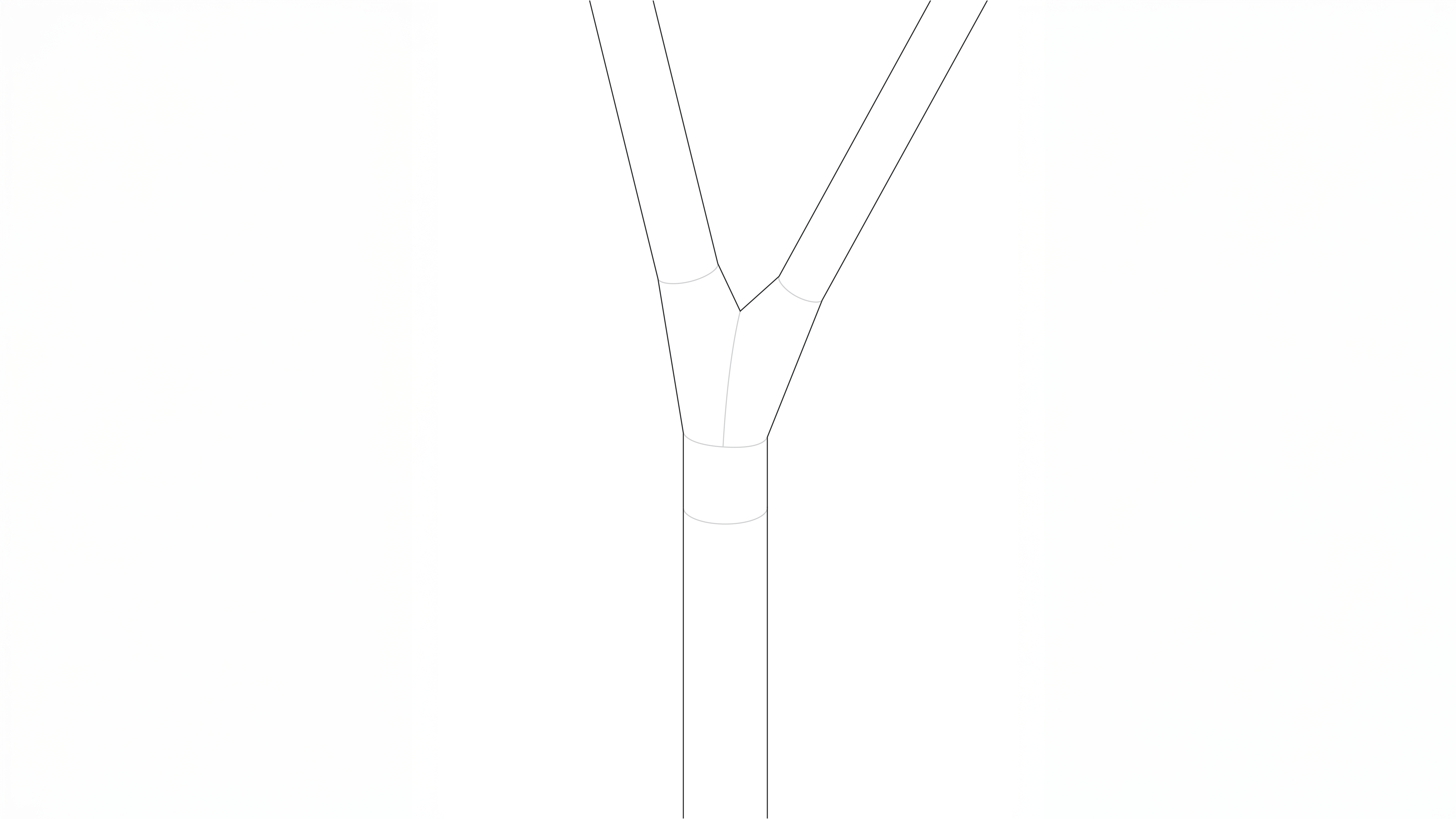
Beyond solar energy generation, the installation can incorporate atmospheric water generation systems, producing substantial quantities of water from air, thus promoting soil restoration and environmental sustainability. Employing piezoelectric materials could enable turbine-less wind energy harvesting.
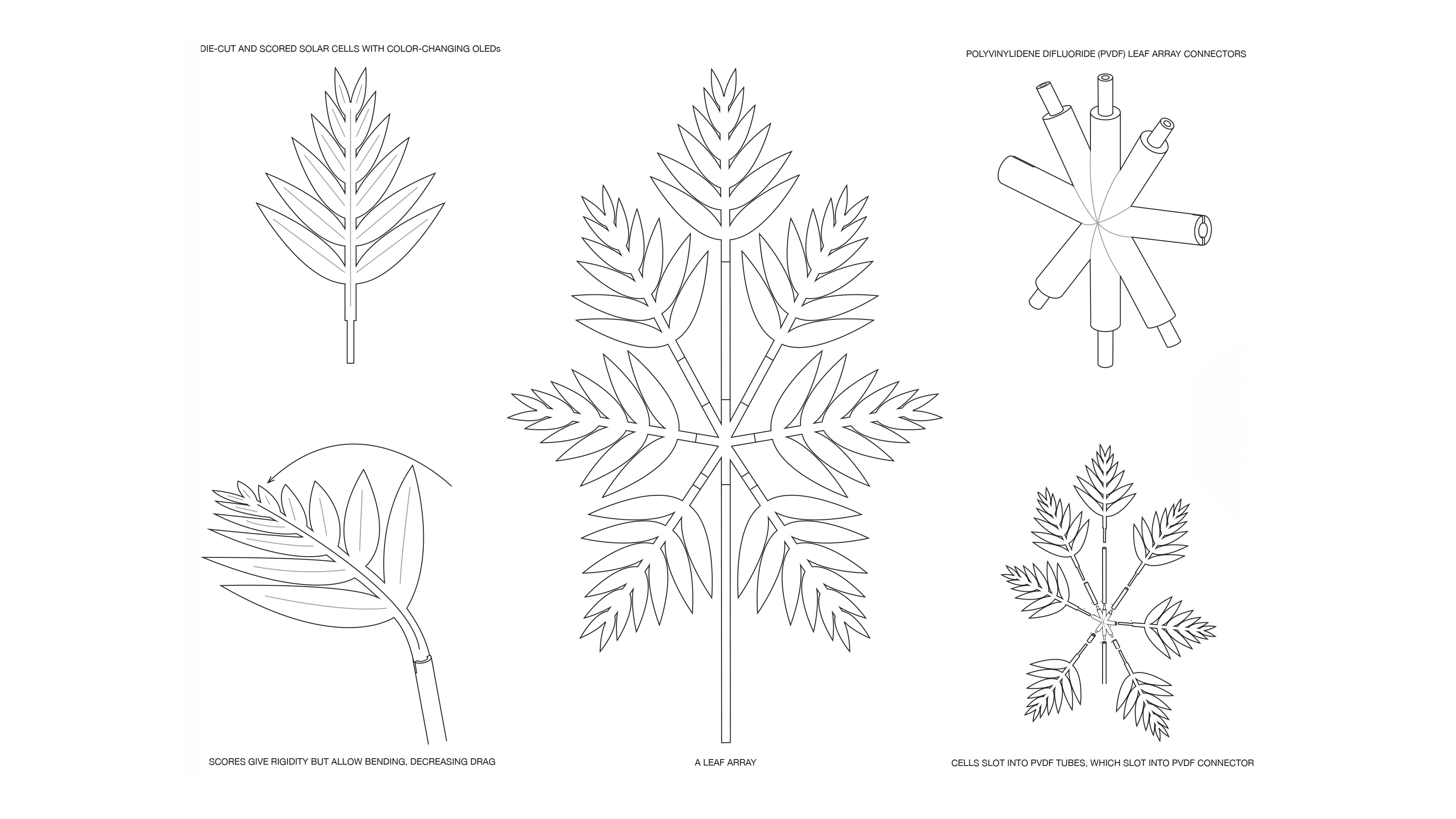
The TWP Fibonacci Fractal Tree represents a significant leap forward in photovoltaic mounting technology, addressing critical global challenges of energy production and water sustainability through biomimicry and engineering.
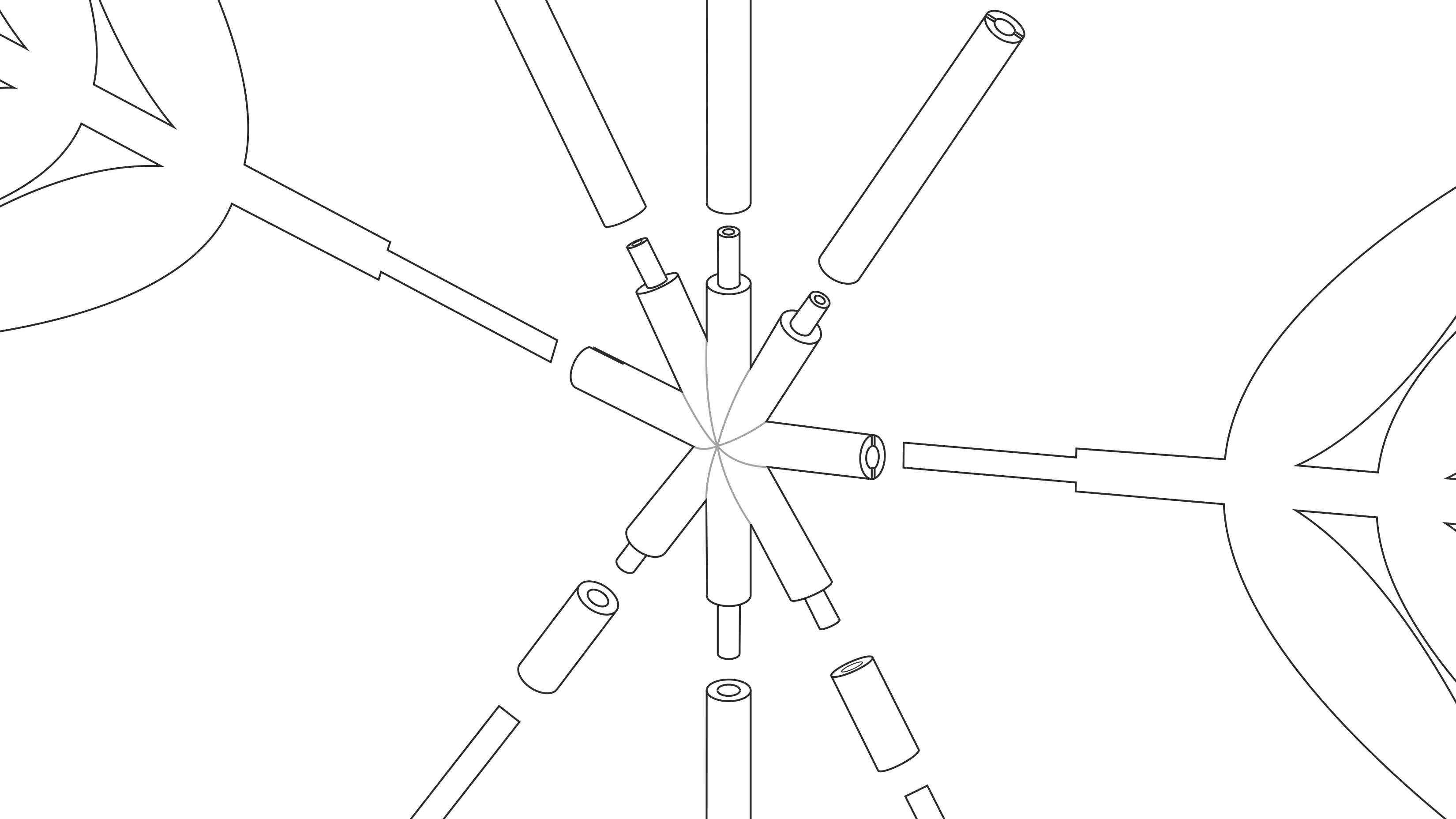
LED Prototype, Joshua Tree
Assembly and Installation
Fibonacci Sequence
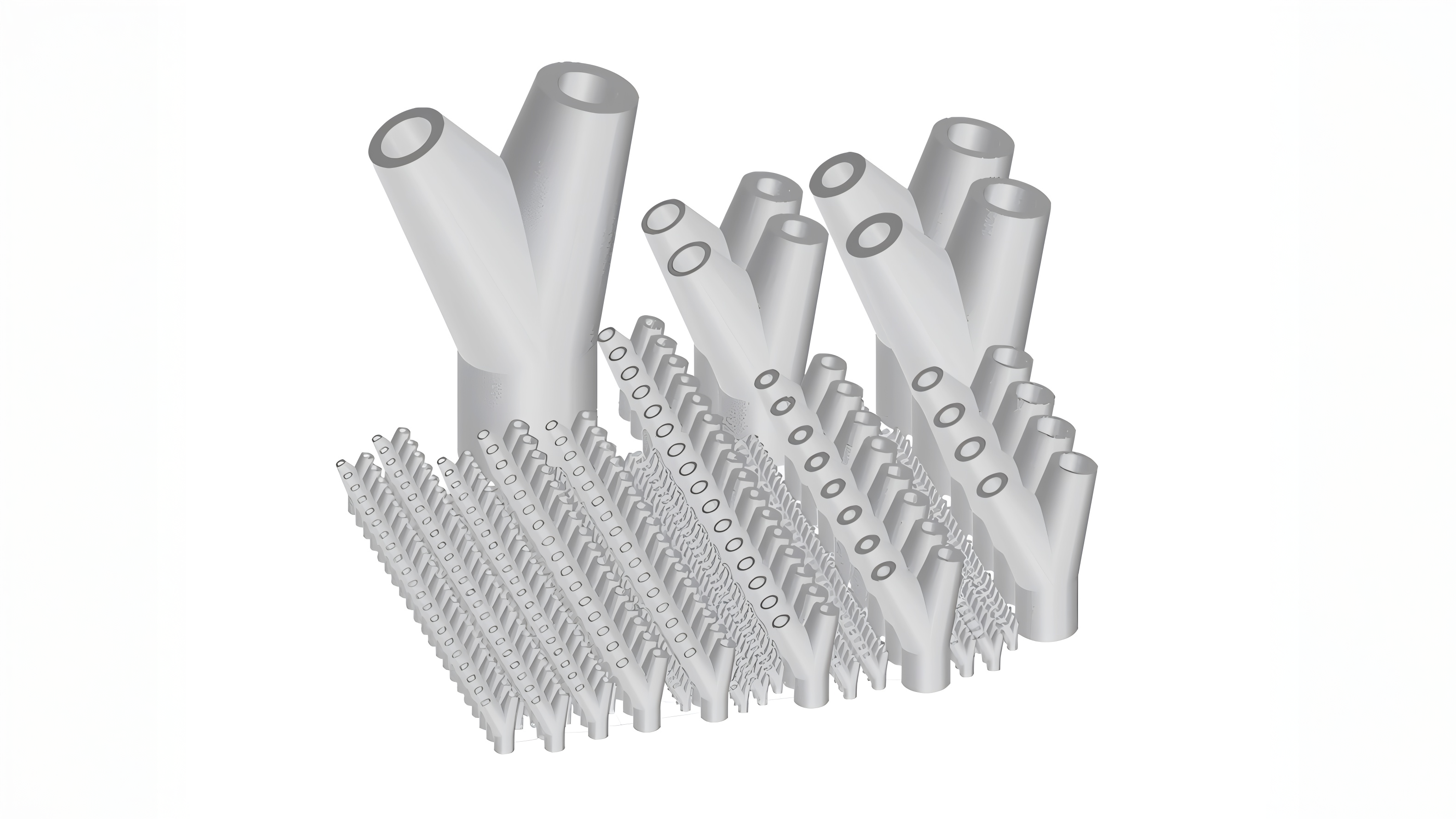
TWP employs a novel application of the Fibonacci sequence, a mathematical series initially described by Acharya Pingala over two thousand years ago. Previous synthetic solar tree designs often lacked the inherent structural stability and optimal surface-area efficiency characteristic of natural tree forms. The current design approach utilizes Leonardo da Vinci's area-preserving rule, ensuring the combined cross-sectional area of branches does not exceed the trunk's cross-sectional area.
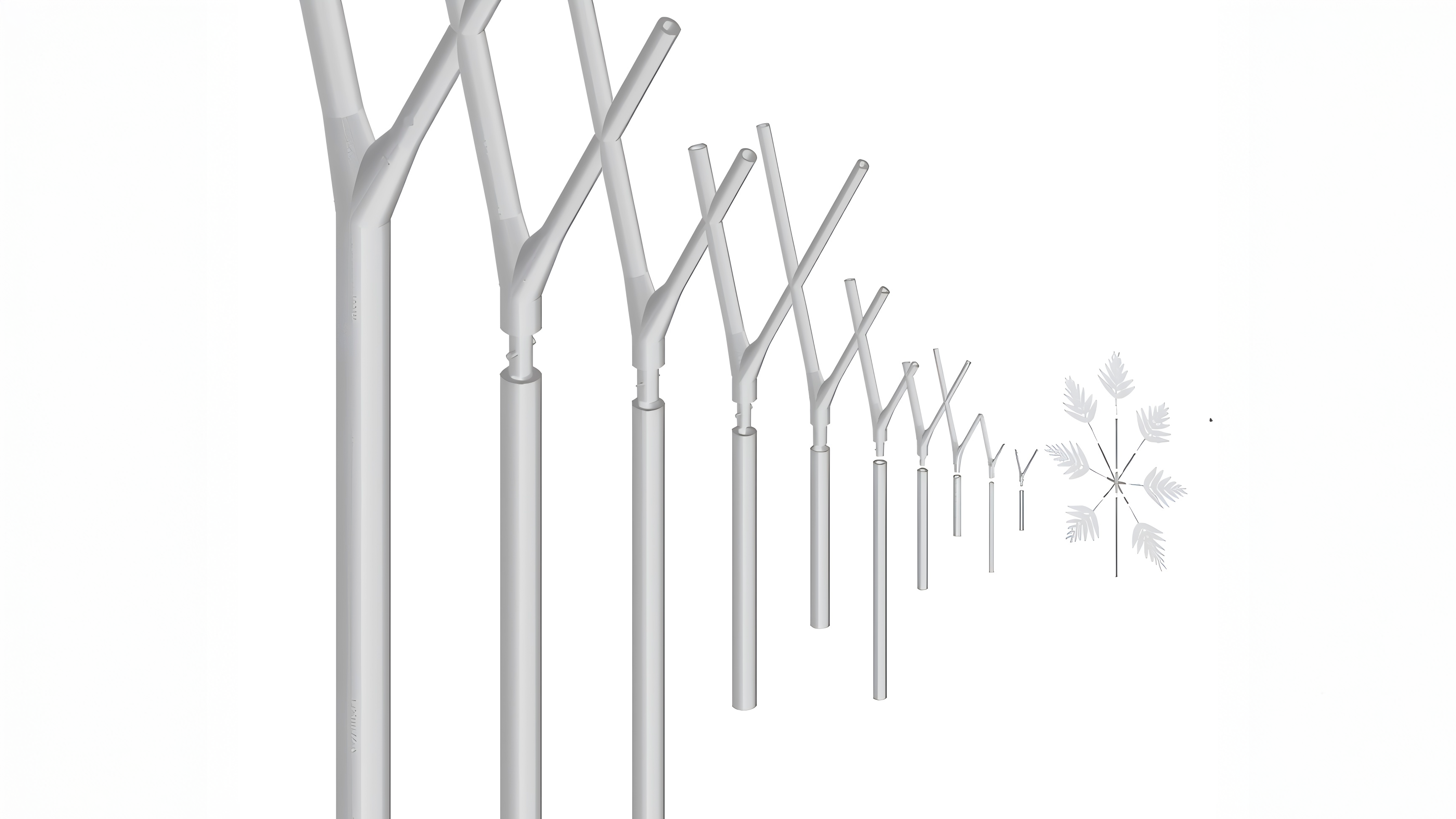
The synthetic structure employs a fractal algorithm whereby branch rotation and scaling follows precise relationships as defined by the Fibonacci numbers. Unlike earlier models, which incorporated isolated Fibonacci ratios, this design systematically applies the entire Fibonacci sequence, for the first time. Each branching iteration is based on Fibonacci ratios, effectively optimizing its ability to maximize surface area for any application, including photovoltaic energy harvesting.
Photovoltaic Leaf

TWP has successfully developed:
• Printable Dye-Sensitized Solar Cells (DSSC): Photovoltaic cells converting UV into visible white light, also exhibiting piezoelectric and pyroelectric properties.
• Printable Perovskite Solar Cells (PVSC): High-efficiency photovoltaic cells using inorganic semiconductor layers.
• Printable Electroluminescent (EL) Cells: Thin, flexible lighting elements ideal for wide-area illumination.
• Printable Solid-State Electrolyte: Developed from sodium iodide and potassium iodide in a flexible polymer binder, creating a durable, non-liquid electrolyte for stable energy storage.
• Prototype: A combined photovoltaic, piezoelectric, pyroelectric, and self-charging solid-state battery device.
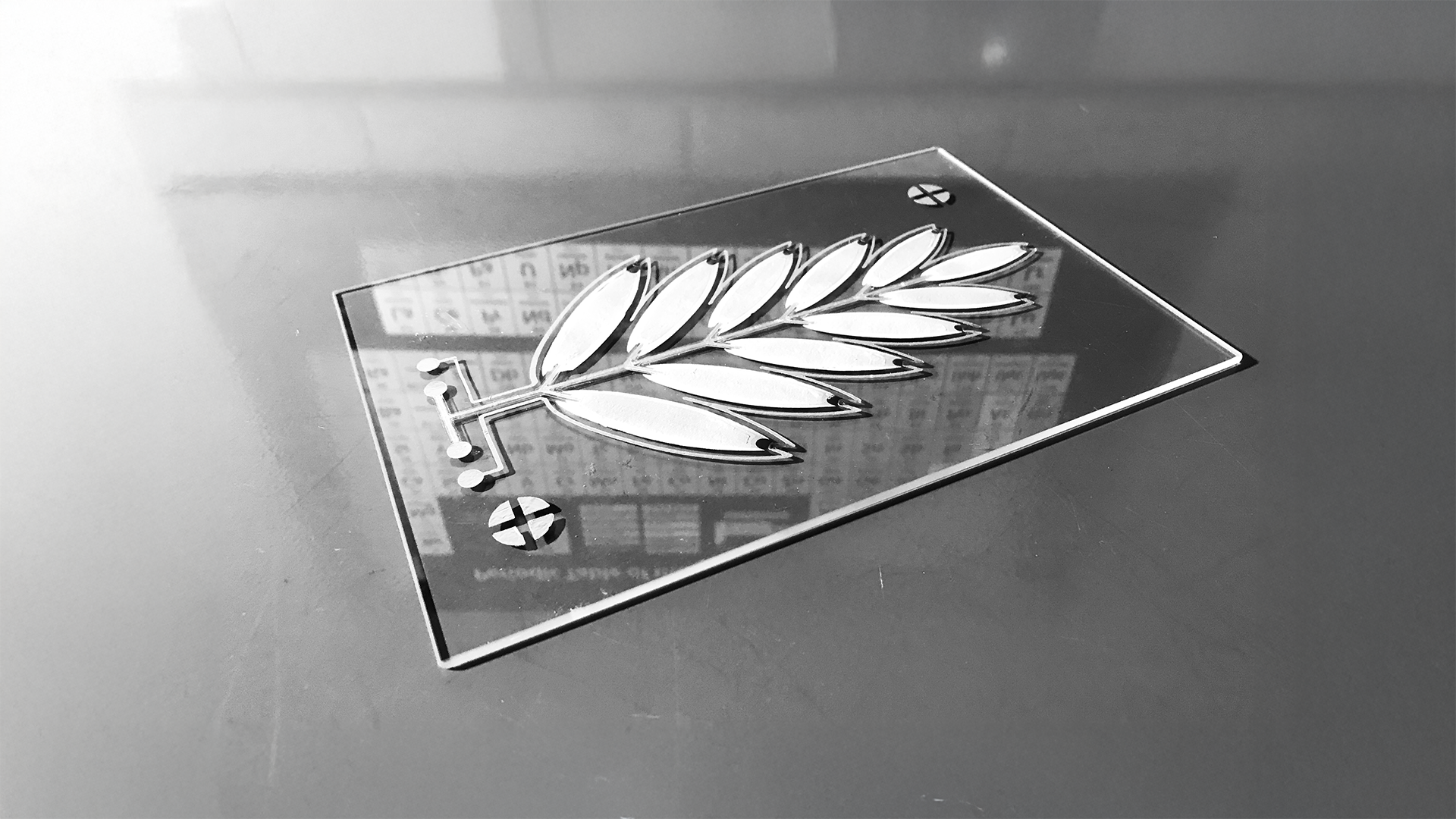
The technology leverages established and advanced materials including titanium dioxide, zinc oxide, graphite (graphene), and PVDF to harness multiple energy conversion methods (light, mechanical stress, thermal changes).
Key innovations include:
•Utilization of common pigments and electro-ceramics as functional components.
•Scalable printing techniques (silk-screening, lithography) facilitating cost-effective mass production.
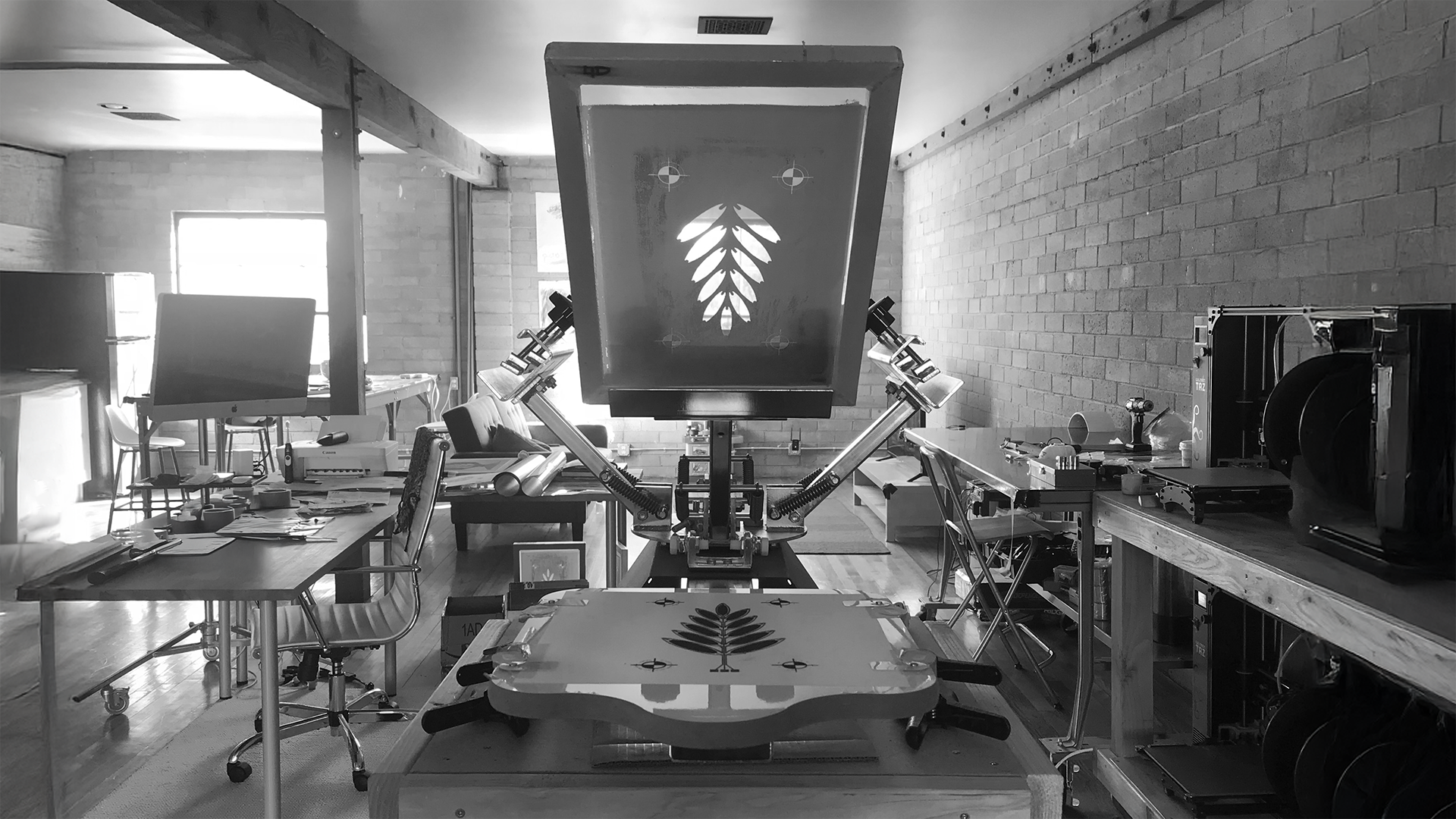
With the successful demonstration of concept and functional prototypes, TWP aims to proceed to the next phase:
• Complete showcase installation integrating mounting structure with functional energy cells.
• Utilize a small-scale printing press to refine prototypes and prepare for scalable production.
• Exploit patented fractal branching system (granted utility patent as of February 20, 2025) for optimization and deployment.
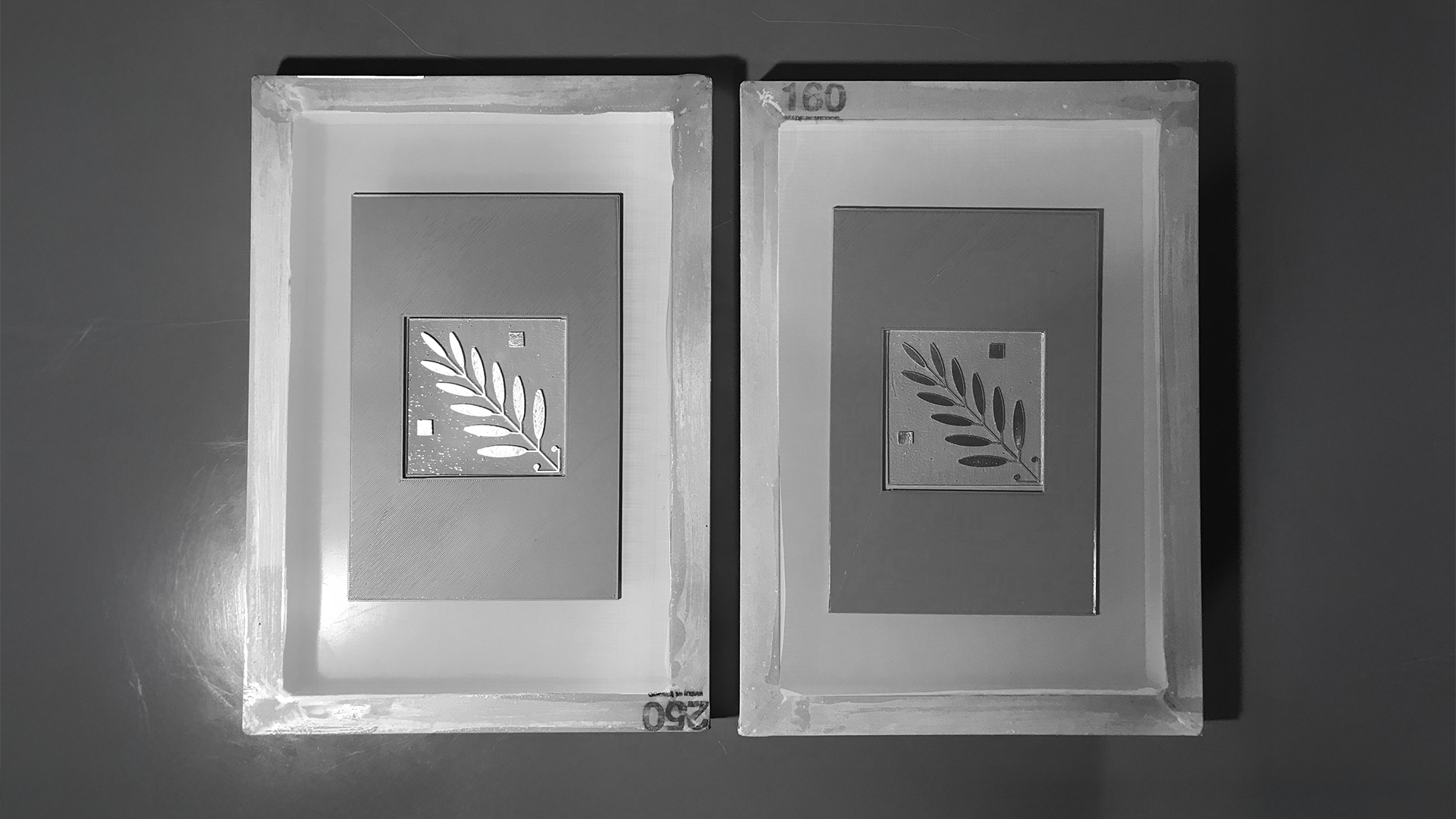
TWP Utility Patent
Media and Press
Research & Development
2019-2020, research and development was conducted TWP’s lab in San Gabriel, less than two miles away from Caltech, and a little further from JPL, workplace of our first investor. TWP conducted practical and experimental research and development, in pursuit of TWP’s longer-term mission: to produce a cost-efficient system and apparatus intended for mass-production and widespread adoption, that is capable of producing energy competitively:





